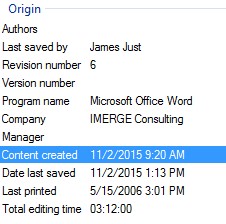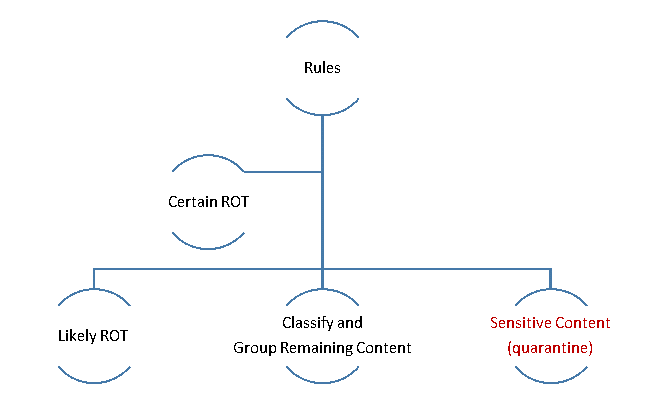A hot topic in Records Information Management is cleaning up, or remediating, shared drives. According to CGOC, and confirmed by our client analyzes, 69% of all shared drive content is  ROT (redundant, outdated or trash). The cost is astronomical: wasted staff time sorting through the junk, IT backup and storage costs, ediscovery costs, etc. Many organizations are transitioning shared drives to Enterprise Content Management system (ECM), Google Drive, OneDrive or another cloud EFSS vendor; why would you migrate ROT? Migration is a perfect time to clean up shared drives, organize content according to an enterprise classification, and build in lifecycle management rules. Ultimately, after cleaning up the digital landfill and organizing the remaining valuable content following a structured, functional classification, you will want to maintain this new, improved state in the future -- that is, meeting your information governance goals.
ROT (redundant, outdated or trash). The cost is astronomical: wasted staff time sorting through the junk, IT backup and storage costs, ediscovery costs, etc. Many organizations are transitioning shared drives to Enterprise Content Management system (ECM), Google Drive, OneDrive or another cloud EFSS vendor; why would you migrate ROT? Migration is a perfect time to clean up shared drives, organize content according to an enterprise classification, and build in lifecycle management rules. Ultimately, after cleaning up the digital landfill and organizing the remaining valuable content following a structured, functional classification, you will want to maintain this new, improved state in the future -- that is, meeting your information governance goals.
Some of the issues confronted when planning to remediate content are discussed in this blog. Next post my associate will discuss functional classifications and their role in content remediation. In another post, I’ll discuss (mostly) manual approaches to remediation and later I’ll post on the use of automation tools for remediating high volumes of content.

The primary information available to evaluate content is the metadata associated the folders and objects on the file share: Folder names, file names, date created, date modified, date accessed, etc. – the file attributes shown in File Explorer. Additional metadata, as shown at the right, is stored in file Properties which may be useful in establishing the value of content. Of course, opening and reading content or properties on individual files is far too time consuming to be a realistic approach. One approach to extracting these data is to use simple shareware tools, such as Directory Lister Pro; once extracted the data can be moved to Excel but it can be a daunting task to manipulate thousands of rows of data and get meaningful results.
There are added complexities when evaluating content – the metadata may not be accurate. I had the unfortunate necessity to restore my files from a cloud backup vendor on May 28, 2008. Why do I remember this date nine years later? Because the restore software reset all of the modify dates! Then on 9/21 I restored files from OneDrive to a new computer and the Create and Last Accessed date now show the dates of the latest restore. Metadata changes from backup or other system designs are commonplace, albeit less so in recent years.
While metadata integrity is one vexing challenge, the most common issue originates from the organic development of shared drive file structures over the years - when shared drives came into being information governance wasn't even a consideration and rarely was a classification or taxonomy developed from the outset. Shared drives, by and large, were not planned; rather, they were created by individuals for their own purposes and without an enterprise view. As a result, there is content with varying retention rules, security rules, and ownership mixed together within a folder structure making it impossible to simply delete a folder and all of its content.
When initiating a content analysis effort the basic decision tree looks like this:
The key to successful remediation is carefully defined business rules and consideration of the risks and costs associated with failing to expunge expired content or expunging the wrong content. The rules must then be applied in the order that remediates the most content with each rule while respecting governance rules such as the retention schedule, legal holds, business need, etc. Finally, you need to institute a review process for questionable ROT which will involve the business, legal, records management and management. Once you have clean data you'll need a method for classifying and organizing the remaining, valuable content - a functional classification.
Next blog we'll discuss functional classifications (taxonomies) and their importance to the remediation process.
Contact IMERGE for more information on shared drive remediation (shared drive clean-up), functional classifications, information governance or other records information management needs.
Jim

